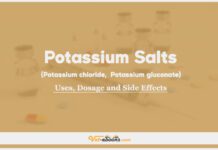Aluminum Hydroxide for Dogs, Cats, Reptiles, and Birds: Dosage, Uses, and Side Effects Guide

Overview
Aluminum hydroxide is an antacid through decreasing gastric acid. May also bind bile acids and pepsin and promote the local synthesis of prostaglandin (PGE-1). Additionally, it binds inorganic phosphate in the GI tract, preventing its absorption.
Uses of Aluminum Hydroxide For Dogs, Cats, Pigs, and Birds
- Dogs and Cats:
- Treatment of gastritis and gastric ulcers.
- Reduction of serum phosphate levels in chronic kidney disease.
- Birds:
- Used to manage hyperphosphatemia.
- Reptiles:
- Employed for hyperphosphatemia control and as an antacid.
Aluminum Hydroxide Dose For Dogs, Cats, Pigs, and Birds
| Species | Condition | Dosage & Notes |
|---|---|---|
| Dogs | Gastritis/Gastric ulcers | 10–30 mg/kg PO q6–8h (tablets) or 0.5–1.0 ml/kg (gel) q6–8h with meals. Note: Mix with food for better palatability. |
| Hyperphosphatemia (CKD) | 10–30 mg/kg PO q6–8h. Adjust dose based on serum phosphate levels. | |
| Cats | Gastritis/Gastric ulcers | 10–30 mg/kg PO q6–8h (tablets) or 0.5–1.0 ml/kg (gel) q6–8h with meals. Note: Mix thoroughly with food. |
| Hyperphosphatemia (CKD) | 10–30 mg/kg PO q6–8h. Adjust dose as needed based on response and serum phosphate levels. | |
| Birds | Hyperphosphatemia | 50–100 mg/kg PO once or twice daily. |
| Reptiles | Hyperphosphatemia/Antacid | 50 mg/kg PO q12h. Adjust dosage as necessary based on clinical response. |
Drug Dosage Calculator
You Should Give:
Common Side Effects of Aluminum Hydroxide
- Constipation is a common side effect.
- Hypophosphatemia may develop, especially with long-term use.
Contraindications of Aluminum Hydroxide
- Use cautiously in animals susceptible to constipation.
- Avoid in patients with known hypersensitivity to aluminum compounds.
Some Notes:
- Thoroughly mix the drug with food to enhance palatability and ensure even distribution.
- Drug Interactions:
- Avoid concurrent use with the following drugs due to absorption interference:
- Allopurinol
- Digoxin
- Fluoroquinolones
- Gabapentin
- H2 Antagonists
- Iron Salts
- Itraconazole
- Mycophenolate
- Tetracyclines
- Thyroid Hormones
- Avoid concurrent use with the following drugs due to absorption interference:
- Regular monitoring of serum phosphate levels is recommended during prolonged use to avoid hypophosphatemia.
Tip
Do You Want To Increase Your Veterinary Knowledge and Practical Skills?
You Can Now Browse and Download +3000 Veterinary Books Online In All Veterinary Fields.
Get Veterinary Books Tip
Do You Want To Increase Your Veterinary Knowledge and Practical Skills?
You Can Now Browse and Download +3000 Books For Veterinary Professionals & Students Online.
Download Veterinary Books




















